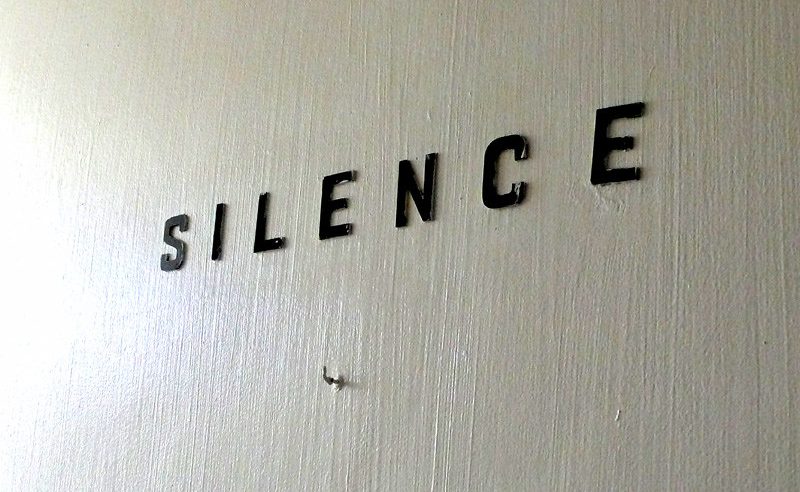Suicidal Ideation or ‘Malingering’? A case of Testimonial Injustice.
27 November 2023
Introduction
According to the Office for National Statistics, 5,275 suicides were registered in England and Wales in 2022[1]. Nevertheless, reports of the intent to kill oneself are not always met with the credibility they deserve, with potentially fatal results. We recognise this as testimonial injustice, whereby a person’s testimony is not taken seriously due to a pervasive identity prejudice attached to the speaker (Fricker 2007). To meet the government’s ‘zero suicide ambition’ for mental health patients, we need to adopt epistemically just methods of evaluating suicide claims.
Stigma and Suicide
People with suicidal ideation are wrongly perceived to be selfish, incompetent, emotionally weak, and immoral (Sheehan et al, 2017)[2]. Although suicide has largely been decriminalised[3], the perception that suicide is morally wrong persists. The immorality attached to suicidal ideation creates a unique form of pathophobia[4][5]. On the one hand, the suicide claim may be deemed genuine and immoral due to the harm caused to friends and relations if the person were to end their life. For example, suicidal ideation or attempts may be perceived as emotionally abusive: ‘The immediate reaction is, “How dare you do something to me when we are trying so hard to help you?” (Rimkeviciene et al., 2015: 595)[6]. On the other hand, the suicide claim may be considered disingenuous and merely a ploy to attain some further goal. The latter is the form of stigma that tracks people with suicidal ideation into the healthcare system. Therefore, rather than dismissed as fallible, suicide claims are more likely to be dismissed as deceitful.
Testimonial Injustice and Malingering
Using conversation analysis, Bergen et al found cases where claims of suicidal ideation had been undermined, questioned and recharacterized by healthcare practitioners (Bergen et al, 2023) [7]. Through several different communication practices (such as speaking over the patient, challenging the authenticity of the patient’s suicidal ideation and attempting to confront the patient with inconsistencies in their account), some clinicians demonstrated that they were not sufficiently receptive to their patient’s testimony.
In addition, Petrea Taylor has developed studies showing that suicide claims from women are particularly likely to be dismissed as attention-seeking and manipulative, as they encounter additional misogynistic identity prejudices:
Even if you tell [clinicians] you were suicidal, it is not taken seriously. They almost refuse to treat you. They refuse to talk to you. You are just worthless . . . You can come out of [the hospital] feeling three times worse than when you go in with a crisis . . . because [the clinicians] are too judgmental. (Taylor, 2020)[8]
“I just said to [psychiatrist], “You aren’t listening to me!” [Psychiatrist responded], “Well nothing is wrong with you” (Taylor. 2022: 616-617)[9].
“[the psychiatrist] came in and said, “You are manipulating the system…” (Taylor, 2022: 617).
Beyond self-reports, institutionalised testimonial injustice is reflected in the language surrounding suicidal ideation (Frey at al., 2020)[10]. The very language implemented in the context of suicidal patients betrays an implicit stigma, as such patients are not referred to as ‘communicating’ or even ‘confessing’ suicidal urges but of ‘threatening suicide’ (ibid). This terminology suggests that the patient is blackmailing the clinician, using the ‘threat’ of suicide as part of an ultimatum to force them to give in to the patient’s demands. This attitude is reflected in the concept of ‘malingering’.
The DSM-5 defines malingering as ‘the intentional production of false or grossly exaggerated physical or psychological problems’[11]. The DSM-5 claims that malingering is not a psychiatric illness. What differentiates malingering from psychiatric disorders whereby the patient feigns, exaggerates or creates illness (e.g. Munchhausen’s Syndrome), is the pursuit of external benefits. This may include drugs, evading criminal prosecution, avoiding work or school, paid leave from employment, or shelter. According to the DSM-5, malingering ‘should be strongly suspected’ in the following situations:
- A medicolegal context e.g. a patient presents with an illness while facing trial.
- Marked discrepancy between the individual’s “claimed stress or disability” and “objective finding and observation”.
- Lack of compliance with diagnostic evaluation, treatment regimen and follow up care.
- Presence of anti-social personality disorder.
According to a study conducted by Rumschick and Appel[12], in one month psychiatrists suspected one-third of patients of malingering, and 20% were ‘strongly or definitely’ suspected of malingering. Of those ‘strongly or definitely’ suspected of malingering, patients with suicidal ideation comprised the majority (58%) (Rumschick & Appel, 2019: 118).
The second of the malingering criteria appears to be particularly problematic for people with suicidal ideation. It does not seem possible for the clinician to identify a discrepancy between the individual’s claim of suicidal ideation and ‘objective finding and observation’. There is no measure to verify the suicide claims objectively at the time in which they are made. In addition, a lack of compliance with diagnostic evaluation, treatment regimen and follow-up care is not at odds with genuine suicidal ideation.
Moreover, to dismiss a claim of suicidal ideation on the grounds of an anti-social personality disorder is epistemically unjust. Anti-social personality disorder is a deeply stigmatised condition, which leaves those diagnosed vulnerable to credibility deficit (Fisher, 2023). The malingering criteria in the DSM-5 institutionalises an epistemically unjust attitude toward the suicide claims of those with anti-social personality disorder.
It is also important not to dismiss suicide claims on the grounds that the claimant may receive external benefits from receiving support. People with mental health problems are some of the most marginalised in our society. They are less likely to enter higher education or find employment and have an increased risk of crime victimisation, poverty, and homelessness (Mental Health Taskforce, 2016)[15]. Therefore, while relief from a poor socioeconomic position would be advantageous for many people with mental health problems, this does not rule out the legitimacy of a suicide claim and such external benefits should not be cause for downgrading the patient’s testimony. Moreover, those in a poor socioeconomic position are naturally a high-risk group for suicide (Stack, 2021)
To be clear, we recognise that some people who make suicide claims may lie to gain some external benefit. However, in attempting to distinguish those with genuine suicidal ideation from malingerers, the decision made by the clinician risks being unintentionally influenced by identity prejudice. In these instances, people with suicidal ideation may be met with testimonial injustice.
We do not suggest that all, or even many, clinicians are insensitive to those with suicidal ideation. They are often very sympathetic and successfully prevent suicide in their patients. Moreover, clinicians are restricted by pressures on time and resources, impacting the quality of care delivered to people with suicidal ideation. Nevertheless, testimonial injustice does sometimes occur. When it does, it is through implicit biases despite the clinician’s best intentions. Indeed, the clinician may have morally good motives for de-prioritising a patient they perceive as being deceitful to dedicate time and resources to those who need it. Yet, as there is no accurate way of determining disingenuous suicide claims, we must take each one seriously. We argue that it is essential that we attune our testimonial sensibility so that our judgements regarding suicide claims are not skewed by prejudice. By addressing the testimonial injustice experienced by people with suicidal ideation, we can build more effective suicidal prevention strategies.
[1] Office for National Statistics (ONS), released 5 April 2023, ONS website, statistical bulletin, Quarterly suicide death registrations in England: 2001 to 2021 registrations and Quarter 1 (Jan to Mar) to Quarter 4 (Oct to Dec) 2022 provisional data.
[2] Sheehan, Lindsay L et al. “Stakeholder Perspectives on the Stigma of Suicide Attempt Survivors.” Crisis vol. 38,2 (2017): 73-81. doi:10.1027/0227-5910/a000413
[3] However suicide is still illegal in several countries; see (Mishara, & Weisstub, 2016).
[4]Pathophobia is a term coined by Ian James Kidd to capture the unique stigma experienced by ill people. See Kidd, Ian J Pathophobia, Vices, and Illness, International Journal of Philosophical Studies, 27:2, 2019, 286-306, DOI: 10.1080/09672559.2019.1612625
[5] People with suicidal ideation are not the only people with psychiatric illness perceived as immoral. This too could be said of people with addictions and of people with eating disorders. Future research should explore the impact of these ‘immorality’ prejudices in cases of epistemic injustice.
[6] Rimkeviciene, Jurgita., Hawgood, Jacinta., O’Gorman, John & De Leo, Diego. Personal Stigma in Suicide Attempters, Death Studies, 39:10, 592-599, 2015. DOI: 10.1080/07481187.2015.1037972,
[7] Bergen, Clara, et al. “Implying Implausibility and Undermining versus Accepting Peoples’ Experiences of Suicidal Ideation and Self-Harm in Emergency Department Psychosocial Assessments.” Frontiers in Psychiatry, vol. 14, 2023, doi:10.3389/fpsyt.2023.1197512.
[8] Taylor, Petrea. “System Entrapment: Dehumanization While Help-Seeking for Suicidality in Women Who Have Experienced Intimate Partner Violence.” Qualitative Health Research, vol. 30, no. 4, 2019, pp. 530–546, doi:10.1177/1049732319857671.
[9] Taylor, Petrea Challenging the Myth of “Attention Seeking” Women with Suicidality: A Grounded Theory Study about Applying Counter-Pressure to Manage System Entrapment, Issues in Mental Health Nursing, 43:7, 613-624, 2022, 616-617 DOI: 10.1080/01612840.2021.2014608
[10] Frey, Laura M., Fulginiti, Anthony., Sheehan, Lindsay., Oexle, Nathalie., Stage, Dese’Rae L., & Stohlmann-Rainey, Jess. What’s in a word? Clarifying terminology on suicide-related communication, Death Studies, 44:12, 808-818, 2022 DOI: 10.1080/07481187.2019.1614111
[11] American Psychiatric Association. Diagnostic and statistical manual of mental disorders: dsm-5. 5th edn. Arlington, VA: American Psychiatric Association. 2013.
[12] Rumschik, Sean.M. and Appel, Jacob.M. ‘Malingering in the psychiatric emergency department: Prevalence, predictors, and outcomes’, Psychiatric Services, 70(2), 2019 pp. 115–122. doi:10.1176/appi.ps.201800140.
[13]Fisher, Jane ‘Epistemic injustice: The silenced voices’. International Journal of Mental Health Nursing, 00, 1–4, 2023. https://doi.org/10.1111/inm.13163
[14] Langley, Lauren & Price, Eleanor ‘Death by A thousand cuts: Report into the tees, esk and wear valleys NHS foundation trust “BPD+” protocol. 2022. https://doi.org/10.13140/RG.2.2.34275.02085
[15] Mental Health Taskforce. The Five Year Forward View For Mental Health. [online] England.nhs.uk. 2016. Available at: <https://www.england.nhs.uk/wp-content/uploads/2016/02/Mental-Health-Taskforce-FYFV-final.pdf>
[16] Stack, Steven. ‘Contributing factors to suicide: Political, social, cultural and economic’, Preventive Medicine, 152, 2021 doi:10.1016/j.ypmed.2021.106498.
- October 2025
- September 2025
- August 2025
- July 2025
- June 2025
- May 2025
- April 2025
- March 2025
- February 2025
- January 2025
- December 2024
- November 2024
- October 2024
- September 2024
- August 2024
- July 2024
- June 2024
- May 2024
- April 2024
- March 2024
- February 2024
- January 2024
- December 2023
- November 2023
- October 2023
- September 2023
- August 2023
- July 2023
- June 2023
- May 2023
- April 2023
- March 2023
- February 2023
- January 2023
- December 2022
- November 2022
- October 2022
- September 2022
- August 2022
- July 2022
- June 2022
- May 2022
- April 2022
- March 2022
- February 2022
- January 2022
- December 2021
- November 2021
- October 2021
- September 2021
- August 2021
- July 2021
- June 2021
- May 2021
- April 2021
- March 2021
- February 2021
- January 2021
- December 2020
- November 2020
- October 2020
- September 2020
- August 2020
- July 2020
- June 2020
- May 2020
- April 2020
- March 2020
- February 2020
- January 2020
- December 2019
- November 2019
- October 2019
- September 2019
- August 2019
- July 2019
- June 2019
- May 2019
- April 2019
- March 2019
- February 2019
- January 2019
- December 2018
- November 2018
- October 2018
- September 2018
- August 2018
- July 2018
- June 2018
- May 2018
- April 2018
- March 2018
- February 2018
- January 2018
- December 2017
- November 2017
- October 2017
- September 2017
- August 2017
- July 2017
- June 2017
- May 2017


